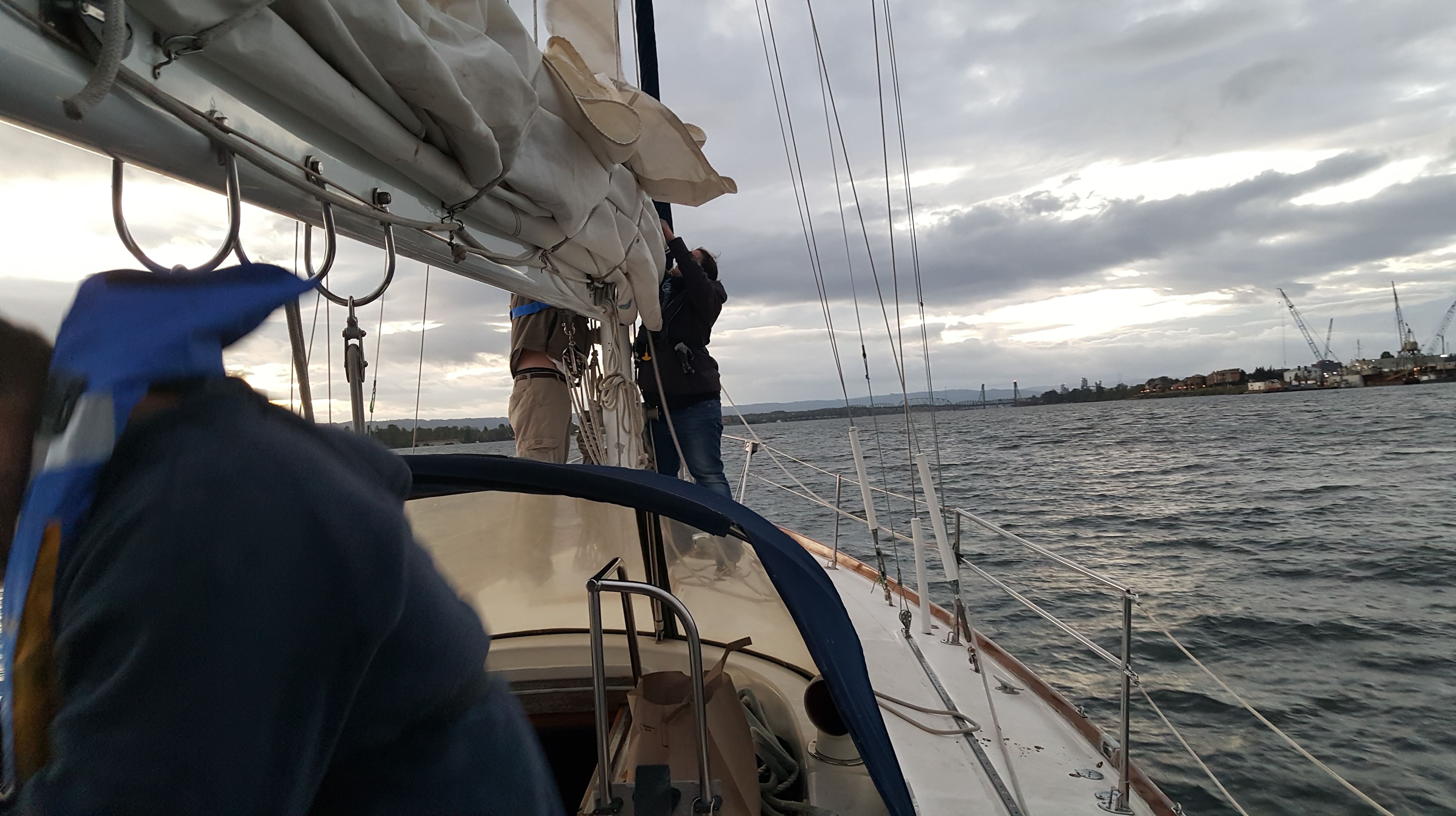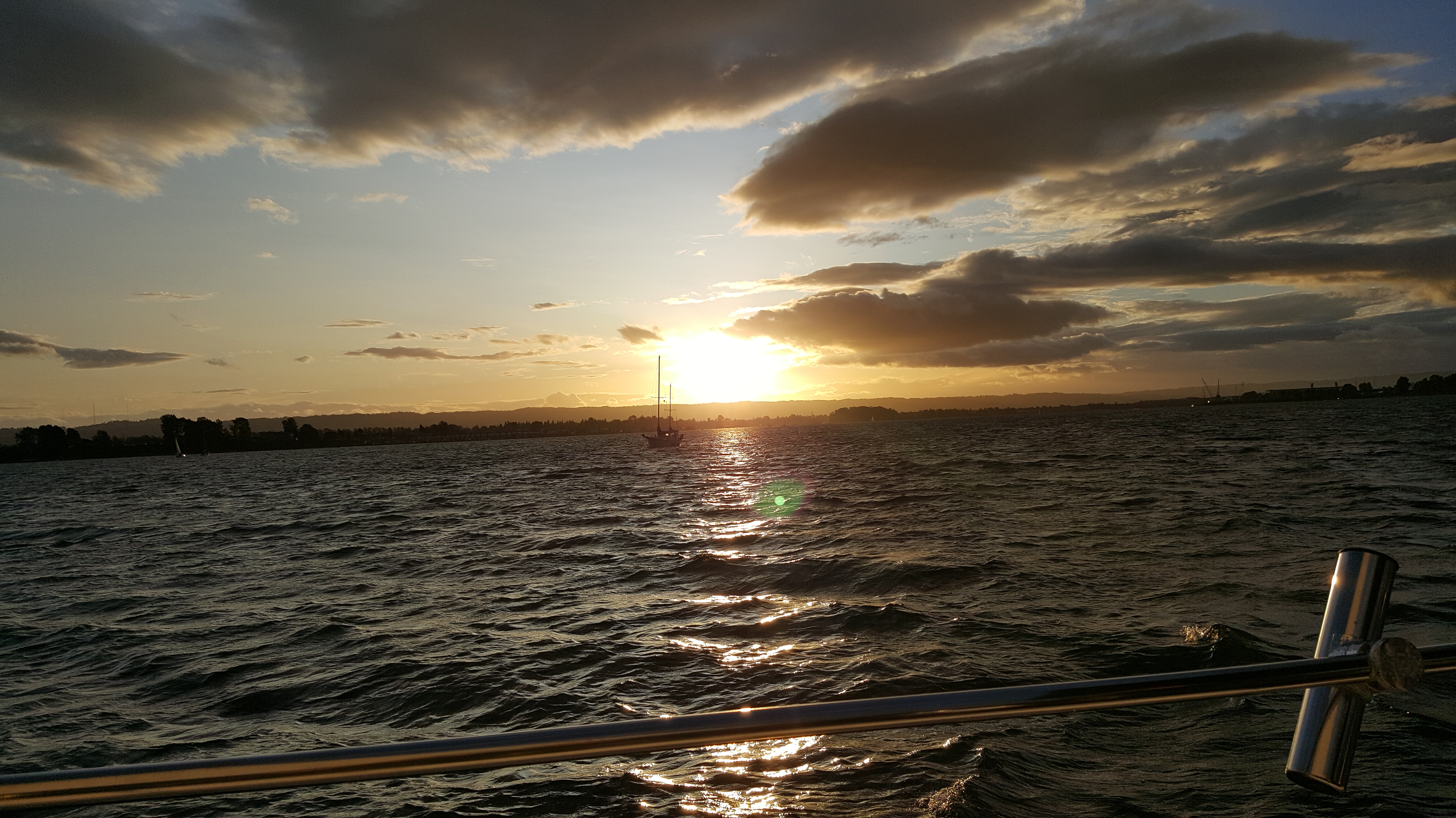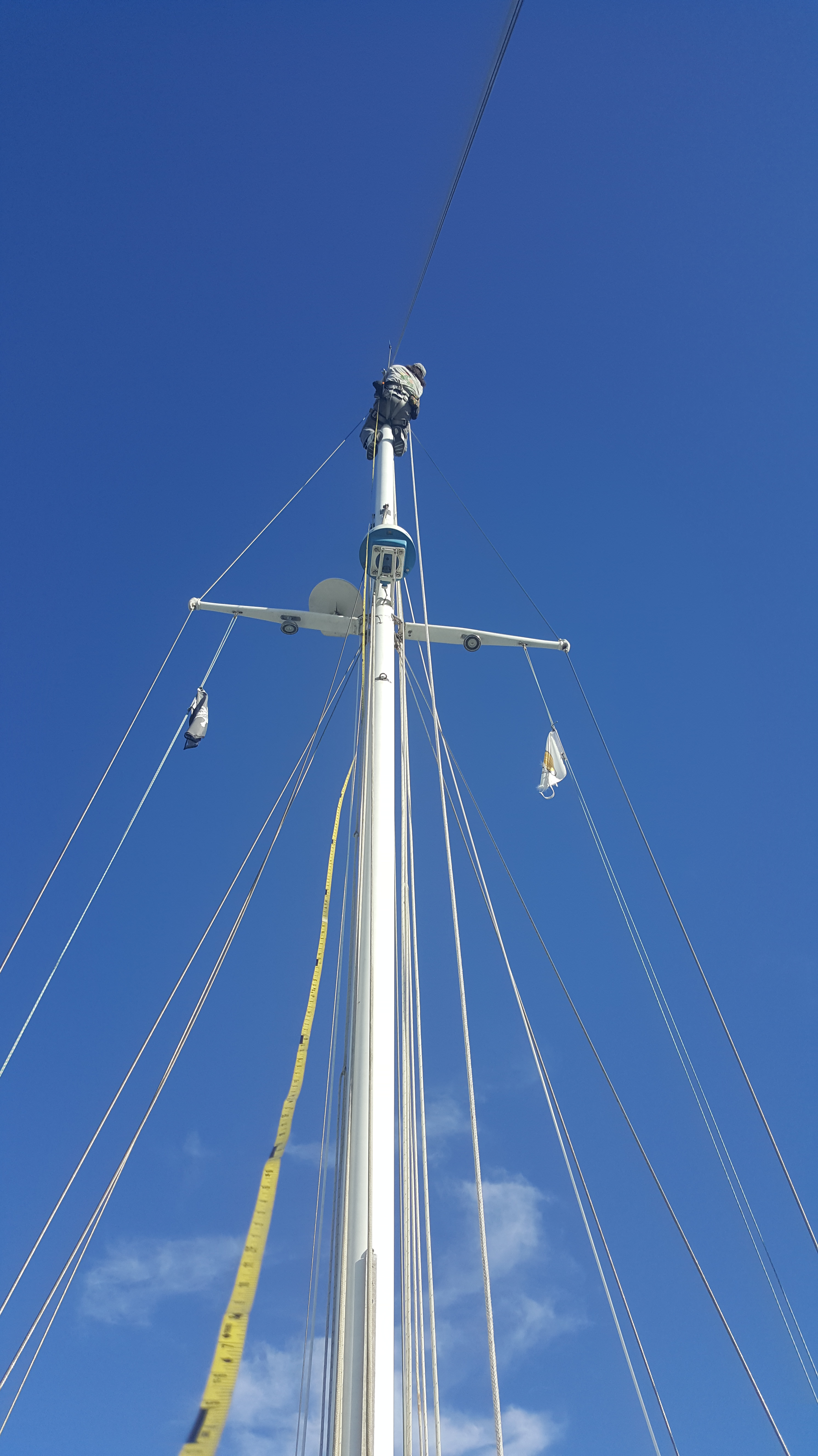When we purchased Mosaic, we knew that her rigging was toward the end of its life. The broker claimed it was replaced around 2007, but without any documentation to back that up, we took it with a grain of salt. Our hope was to get 2 years out of it, and replace it late 2018 / early 2019 before our planned departure date in the spring of 2019. This is the first in a series of posts that will cover the events that led up to our deciding to tackle the project this winter, the thinking behind the many decisions that were subsequently made, and the process itself.
In the early part of October, we were graced with the kind of beautiful fall day that the northwest serves up every so often. The sun was shining, the air was warm (for October in the Pacific Northwest at least) and the wind was perfect for a late afternoon sail. We jumped on the chance and took Mosaic out onto the river. My dad was along for his first sail on Mosaic, so we wanted to take it easy. We spent the first hour or so sailing under main alone, tacking back and forth across the river, dodging barges, and watching the other sailboats. The wind began to freshen so we decided it was time to roll out the Genoa and have some fun before the sun began to set.

Preparing to raise the mainsail.
We maneuvered on a broad reach, took a couple of wraps around the winch with the sheet, the order was given to roll out the sail and…………… the genoa refused to roll out. We went out on deck to investigate, and it quickly became apparent that the sail was binding up at the head, so our first thought was that the halyard had wrapped around the forestay. Having heard horror stories of what can happen to the forestay when a wrapped halyard is pulled too hard, we decided to just sail the remainder of the evening under main alone.

Spotted another Fuji out on the water, with a beautiful Northwest sunset in the background.
Once back at the dock, after some reconnaissance by binocular we determined that the halyard was in fact, not wrapped around the forestay. With a little coaxing we managed to get the sail down and found that the swivel at the top of the roller furler was not functioning as designed (i.e. not swiveling). We rinsed it out with water and applied some lubricant, which helped quite a bit, but it was still not working nearly as smoothly as we would like.
We decided to have a rigger come take a look at the furling system to get a professional opinion. The furler that was on Mosaic when we bought her is ancient and the rigger quickly concluded that while we may be able to get a little more life out of it by replacing the bearings, due to its age and condition, it would ultimately need to be replaced in the near future.
While he was here, we had him perform an inspection of the entire rig, as we did not have any proof of its exact age. His findings reinforced our own thoughts on the rig, that while it was structurally sound, it was beginning to show signs of its age. He recommended that we replace the standing rigging before any offshore sailing.

Rigger up the mast, inspecting and performing some measurements.
With the need to remove or replace the roller furling system and the advanced age of the remainder of the standing rigging, we decided to bite the bullet and replace the standing rigging this winter. This will give us more confidence as we begin to take Mosaic further afield next season.
Thank you for reading, and if you are interested in the details please read the upcoming posts which will detail the decisions we made, such as Roller Furling vs. Hanked On, and cover the process of the yard visit and rerig. -Brenden
